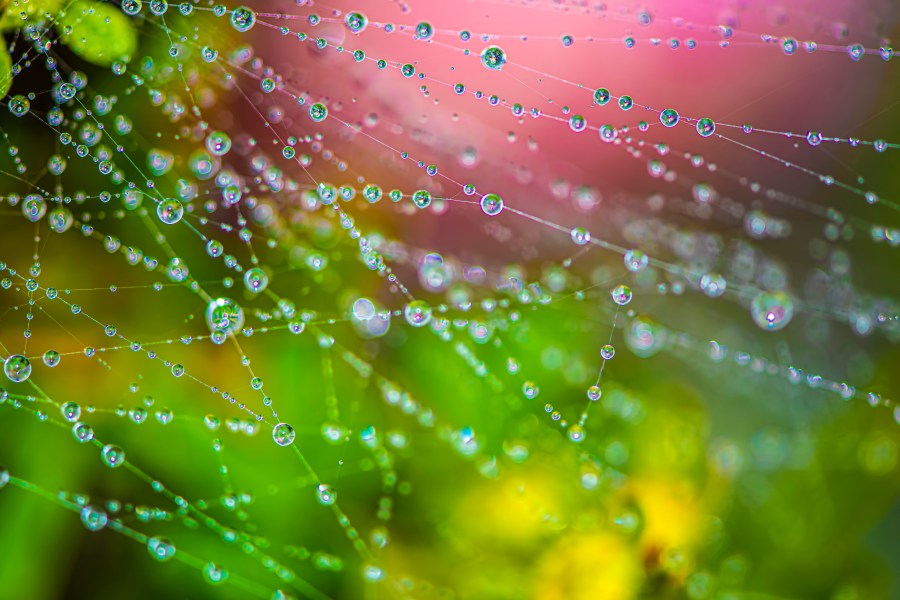HONOLULU (KHON2) — Deep in the Waiʻanae mountains of Oʻahu lives one of the strangest creatures ever discovered. And it’s not what you’d expect. It’s a caterpillar. But it doesn’t eat leaves. It doesn’t spin cocoons. And it doesn’t mind getting a little creepy.
Nicknamed the “bone collector,” this native Hawaiian insect is part of the Hyposmocoma genus and is unlike any other caterpillar on Earth.
Native to Hawaiʻi, this creepy wee caterpillar has its gruesome habits and tiny size, and it has shocked scientists and sparked curiosity around the world.
Here are seven wild facts KHON2.com found about the caterpillar that wears dead bugs and hunts like a spider.
1. It’s a meat-eating caterpillar
Most caterpillars snack on leaves and plants but not this one. The bone collector caterpillar is carnivorous. That means it eats other animals.
Scientists have seen it scavenge insects already caught and killed by spiders. It sneaks into the spider’s web and steals bits of dead ants, flies and beetles.
Some researchers believe the caterpillar may even hunt other live insects. Now, that’s a rare and bold move for something so small.
2. It builds its own camouflage from bug parts
This caterpillar doesn’t just eat bugs. It wears them.
Using silk it spins from its body, the caterpillar builds a small tube-shaped case to live in. Then it decorates that case with body parts of the insects it finds.
“Ant heads, fly wings, beetle legs: it uses them all,” scientists on the team reported.
This strange covering helps the caterpillar blend into the spider’s web. With its gruesome outfit, it looks more like a pile of leftovers than a living threat. The camouflage helps it hide from the spider while it sneaks around collecting snacks.
3. It might even eat its own kind
As if things couldn’t get weirder, scientists believe this caterpillar shows cannibalistic behavior. That means it eats other caterpillars like itself.
This kind of behavior is extremely rare in the world of moths and butterflies. But the bone collector is full of surprises, and its survival tactics show just how strange and specialized life in Hawaiʻi can be.
4. It only lives in one tiny place
You won’t find this caterpillar crawling through your backyard.
The bone collector caterpillar has only been found in one place: the Waiʻanae mountain range on the island of Oʻahu. It lives in an area that’s only about 5.8 square miles. That’s smaller than a single neighborhood in Honolulu.
This tiny range is full of native plants and animals that don’t live anywhere else. But that also means it’s very easy to disturb the caterpillar’s home with development or changes to the environment.
5. It’s extremely rare
Scientists have only seen 62 individual bone collector caterpillars in more than 20 years of research.
That’s fewer than the number of kids in a single classroom. Because of this, the caterpillar is considered very rare and possibly at risk of extinction if its habitat is harmed.
“This kind of species is fragile,” the researchers said in thier report. “Once the land changes, they might not survive.”
6. It’s part of a very strange insect family
The caterpillar belongs to a Hawaiian group of moths called Hyposmocoma. They are known for their weird behaviors and silk cases, but the bone collector is the only one known to feed on animals instead of plants.
In fact, there are more than 400 types of Hyposmocoma in Hawaiʻi, and many live nowhere else in the world. The bone collector is just one more example of how evolution in isolated places like the Hawaiian Islands can lead to surprising results.
7. It reminds us why protecting native species matters
This caterpillar might be tiny, but its story is big.
It shows how special and fragile life in Hawaiʻi really is. Scientists said discoveries like this prove the importance of protecting native habitats before they disappear.
“When you find a caterpillar that hunts like a spider and wears dead bugs as armor, you start to realize that nature is full of surprises,” the researchers said.
You can click here to read the full scientific paper.
And remember, if we don’t take care of the places these creatures live, we could lose them before we even get the chance to learn their full story.
